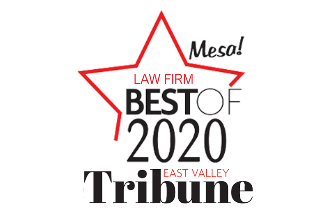 If you have taken the time to create a trust based estate plan and have not taken the next step to ensure all of your assets have been transferred (“funded”) properly, then your trust may not accomplish all that you have intended.
If you have taken the time to create a trust based estate plan and have not taken the next step to ensure all of your assets have been transferred (“funded”) properly, then your trust may not accomplish all that you have intended.
Please use the following guidelines below to be certain you have funded your trust correctly to protect your legacy for yourself and your family.
NEW ASSETS: If you already have a trust, and some or all of your assets have previously been funded into your trust that is great. However, do not be lax in your continued funding efforts as you should continually monitor your trust and its assets including any new acquisition as your acquire them. Just because you have created a “trust” document, this does not mean everything you own is automatically “funded” into your trust. You need to take the next step and actually have your new or unfunded assets titled under your trust’s name. Until you have received proof of by way of a statement, beneficiary change form, deed, etc. you should not assume the assets has been properly funded into your trust. We suggest that everyone create a “Funding Portfolio” where you have an organized system of keeping tabs on your assets and your funding. Our Funding Portfolio’s contain a table of contents where we want our clients to identify each and every asset owned and under an assets corresponding tab contains proof or verification that the assets has been properly funded into the client’s trust.
DELETE ASSETS: If you had an asset that was previously owned by your trust that has been sold, liquidated or closed, we suggest that you either delete it completely from your Funding Portfolio so as to no confuse your future Trustees and family members about its existence. In the alternative, you may want to keep the asset listed but add the date it was sold or closed, which may avoid some different confusion by family, thinking there was an asset, when in fact it had been sold, closed or liquidated.
UPDATE VALUES: If the value of an asset has changed, you should correct the amount (use equity value for real property.) on your list of assets. An annual update of values is usually sufficient for most clients.
UNFUNDED ASSETS: If you have assets that you do not want funded into your Trust, for some reason, you should still list it in your Funding Portfolio and document that the asset is “unfunded”. Remember that Arizona’s small estate statutes allows for the transfer of up to $75,000 in personal property, or $100,000 in real property (although we don’t normally recommend leaving real property outside of your trust regardless of its value) and still avoid going through the full probate process. If collectively your “unfunded” assets are close to or exceed this amount, you need to transfer additional assets into your trust immediately to avoid unnecessary probate consequences. Additionally, if you have a formerly unfunded asset, which you now want to fund to your Trust – you should transfer that asset into your trust be sure you received verification this transfer has actually been completed.
Your estate plan will best accomplish your goals and meet your needs if it is properly funded. If you need the assistance of an experience estate planning attorney to create a trust, or accomplish the funding of your existing trust we are here to help. Please contact our office to set up your appointment today, don’t put it off!
Attorney Profile: Kenneth Barney, Estate Planning
Email: [email protected]
Phone: (480) 833-1113
Main Areas of Law:
Estate Planning – Wills, Trusts & More
Probate in Arizona
Blog: Ken Barney’s articles





